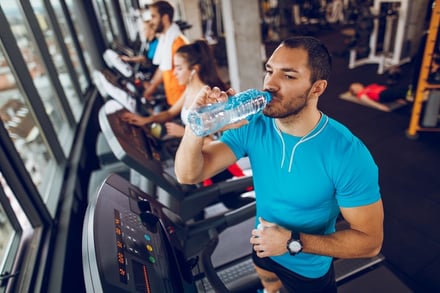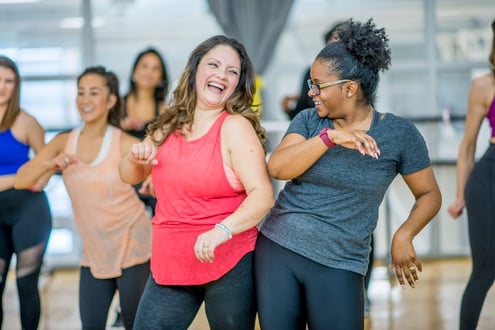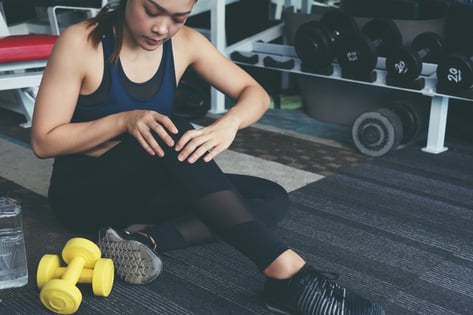 One thing that I’m sure you have heard is the importance of drinking enough fluids. So if some is good for you, shouldn’t it make sense that more is better?
One thing that I’m sure you have heard is the importance of drinking enough fluids. So if some is good for you, shouldn’t it make sense that more is better?
I have heard many tales of people chugging bottles of water right when they wake up to get it out of the way. Or carrying around a gallon jug of water to keep track of the amount they are getting. It’s nice to have a goal in mind of how many ounces to drink each day; unfortunately that number is different for everyone. Since individuals have different sweat rates, workout routines, diets, height, and weight, each person requires a different fluid goal. Read below to see how to know whether you are getting enough water for your body, and some of the dangers of drinking too much.
Check Your Hydration
The best way to know whether you are getting the proper amount of water or fluid per day is to check the color of your urine:
- If it’s pale yellow, that’s a good sign.
- If it’s dark yellow, you need to drink up.
- If it’s clear, you are overhydrated.
Water Intake Guidelines
Thirst should always be your guide to staying hydrated. If you must count ounces, the Institute of Medicine recommends 78–100 ounces of water per day, or 9–13 cups. Obviously, this can change based on the individual, the activity, and the weather. Something else to keep in mind is that a lot of the foods that you eat are high in water content and can add to your hydration status. Fruits and vegetables are loaded with water. Milk, coffee, tea, and juices also count.
What Happens When You Drink Too Much Water?
Overhydration can lead to water intoxication, which is when the body’s electrolytes such as salt and potassium become diluted. Hyponatremia is when the body’s sodium levels get too low. This is the main concern of overhydration. Athletes are the population most at risk of being overhydrated, especially those who participate in long or intense workouts or endurance events.
The good news is that this is extremely rare and you would need to drink many gallons of water for this to happen. The amount you drink at one time could be more of an issue. Your kidneys can process around half a liter per hour. So chugging liters and liters at a time is when the danger could occur. Symptoms of hyponatremia are similar to heatstroke and exhaustion. A headache, exhaustion, feeling lethargic, vomiting, diarrhea, and nausea are all warning signs. If you don’t get help quickly, it can be serious and even deadly.
The best way to prevent hyponatremia is to make sure you aren’t drinking more than you sweat out. Use thirst and the color of urine as a guide. And for those doing endurance events, be sure to have sports drinks that have sodium and other electrolytes and not just plain water.
This blog was written by Angie Mitchell, RD, Wellness Coordinator. To find out more about the NIFS bloggers, click here.


 Running, skipping, hopping, bounding, throwing, and crawling are all activities children around the world enjoy and are necessities for proper movement development. Most sports and lifetime fitness activities require one or more of these basic motor skills. Developing basic motor skills sometimes is not our main priority when it comes to our children’s upbringing. In our lifetime, the focus on physical education has somewhat declined due to various reasons, with one reason being a deemphasis on playground time and even family-time physical activity. Beyond physical fitness, there are many other benefits that one can get from being more active, especially at a young age.
Running, skipping, hopping, bounding, throwing, and crawling are all activities children around the world enjoy and are necessities for proper movement development. Most sports and lifetime fitness activities require one or more of these basic motor skills. Developing basic motor skills sometimes is not our main priority when it comes to our children’s upbringing. In our lifetime, the focus on physical education has somewhat declined due to various reasons, with one reason being a deemphasis on playground time and even family-time physical activity. Beyond physical fitness, there are many other benefits that one can get from being more active, especially at a young age. There are many diet personalities out there. If you are one of these, it could be the reason you are having trouble losing weight or maintaining weight loss.
There are many diet personalities out there. If you are one of these, it could be the reason you are having trouble losing weight or maintaining weight loss.
 As a fitness professional I approach training and helping people from the direction that principles guide methods. The reason for this is that methods and fads will always change, but principles never do. It’s beneficial that the methods and variations of movements change from time to time, as long as the decision to change them is based on solid principles and reasoning. Variations are great, such as a change in foot position in a squat, adding load to a plank position, or varying the implement you are using during the exercise. One implement change that can pay heavy dividends (pun very much intended) is using a specialty lifting bar.
As a fitness professional I approach training and helping people from the direction that principles guide methods. The reason for this is that methods and fads will always change, but principles never do. It’s beneficial that the methods and variations of movements change from time to time, as long as the decision to change them is based on solid principles and reasoning. Variations are great, such as a change in foot position in a squat, adding load to a plank position, or varying the implement you are using during the exercise. One implement change that can pay heavy dividends (pun very much intended) is using a specialty lifting bar. It’s staggering how many people in the world are affected directly and indirectly by health problems. You might not have an incurable disease, but there is a chance that someone you love does. Sometimes there are medications and treatments for these conditions, but not everyone receives the attention they need. Sometimes there are no medications. Fortunately, people have organized charitable foundations that help find cures, medicines, and other aid for those in need.
It’s staggering how many people in the world are affected directly and indirectly by health problems. You might not have an incurable disease, but there is a chance that someone you love does. Sometimes there are medications and treatments for these conditions, but not everyone receives the attention they need. Sometimes there are no medications. Fortunately, people have organized charitable foundations that help find cures, medicines, and other aid for those in need. “You've got this!” "Keep it up!” “So strong!”
“You've got this!” "Keep it up!” “So strong!”  Think about the most recognized duos of all time: Batman and Robin. Mario and Luigi. Buzz and Woody. Stability and Mobility. Wait, what? Yes, like superhero teams, stability and mobility work together to achieve a balanced, harmonious environment for functional movement.
Think about the most recognized duos of all time: Batman and Robin. Mario and Luigi. Buzz and Woody. Stability and Mobility. Wait, what? Yes, like superhero teams, stability and mobility work together to achieve a balanced, harmonious environment for functional movement. Here are some recipes for patriotic healthy eating. Bring one of these red, white, and blue creations to your Fourth of July
Here are some recipes for patriotic healthy eating. Bring one of these red, white, and blue creations to your Fourth of July  We’ve waited for this time for months, where there is no more snow and plenty of sunshine. Long days of outside fun, no kids in school, road trips and vacations—what more could we ask for?
We’ve waited for this time for months, where there is no more snow and plenty of sunshine. Long days of outside fun, no kids in school, road trips and vacations—what more could we ask for?